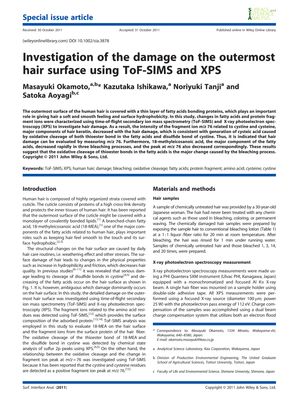Investigation of the Damage on the Outermost Hair Surface Using ToF-SIMS and XPS
December 2011
in “
Surface and interface analysis
”
hair damage fatty acids protein fragment ions ToF-SIMS XPS cystine cysteine hair keratin oxidative cleavage thioester bonds disulfide bonds 18-methyleicosanoic acid bleaching processes protein fragments Time-of-Flight Secondary Ion Mass Spectrometry X-ray Photoelectron Spectroscopy keratin 18-MEA bleaching

TLDR Bleaching hair causes significant damage by breaking down proteins and fatty acids.
The study investigated hair damage by analyzing changes in fatty acids and protein fragment ions using ToF-SIMS and XPS. It found that the intensity of the fragment ion m/z 76, related to cystine and cysteine in hair keratin, decreased with hair damage, indicating oxidative cleavage of thioester and disulfide bonds. Additionally, 18-methyleicosanoic acid, a major fatty acid component, decreased rapidly during three bleaching processes, correlating with the decrease in m/z 76. This suggested that oxidative cleavage of thioester bonds in fatty acids was a significant change caused by bleaching.
